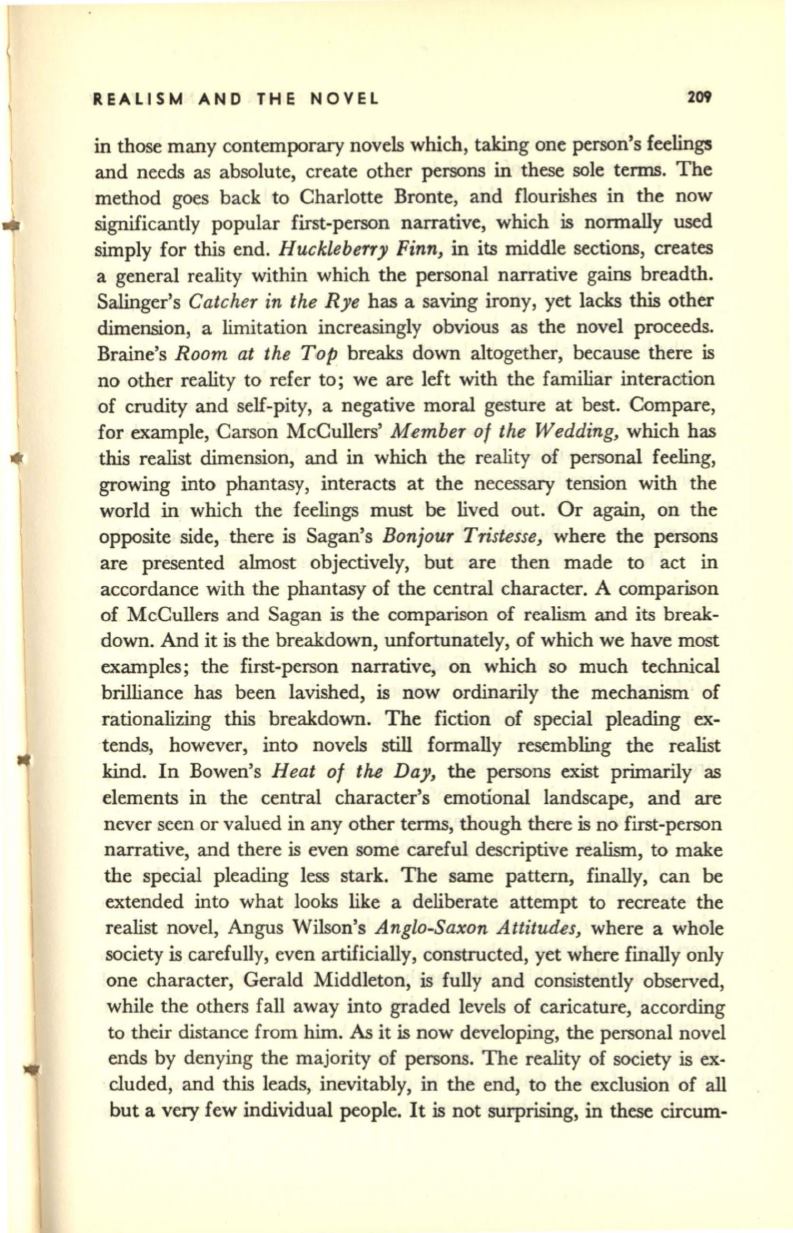
REALISM AND THE NOVEL
209
in those many contemporary novels which, taking one person's feelings
and needs as absolute, create other persons in these sole terms. The
method goes back to Charlotte Bronte, and flourishes in the now
..
significantly popular first-person narrative, which is normally used
simply for this end.
Huckleberry Finn,
in its middle sections, creates
a general reality within which the personal narrative gains breadth.
Salinger's
Catcher in the Rye
has a saving irony, yet lacks this other
dimension, a limitation increasingly obvious as the novel proceeds.
Braine's
Room at the J',op
breaks down altogether, because there is
no other reality to refer to; we are left with the familiar interaotion
of crudity and self-pity, a negative moral gesture at best. Compare,
for example, Carson McCullers'
Member of the Wedding,
which has
this realist dimension, and in which the reality of personal feeling,
growing into phantasy, interacts at the necessary tension with the
world in which the feelings must be lived out. Or again, on the
opposite side, there is Sagan's
Bonjour Tristesse,
where the persons
are presented almost objectively, but are then made to act in
accordance with the phantasy of the central character. A comparison
of McCullers and Sagan
is
the comparison of realism and its break–
down. And it is the breakdown, unfortunately, of which we have most
examples; the first-person narrative, on which so much technical
brilliance has been lavished,
is
now ordinarily the mechanism of
rationalizing this breakdown. The fiction of special pleading ex–
tends, however, into novels still formally resembling the realist
kind. In Bowen's
Heat of the Day,
the persons exist primarily as
elements in the central character's emotional landscape, and are
never seen or valued in any other terms, though there is no first-person
narrative, and there is even some careful descriptive realism, to make
the special pleading less stark. The same pattern, finally, can be
extended into what looks like a deliberate attempt to recreate the
realist novel, Angus Wilson's
Anglo-Saxon Attitudes,
where a whole
society
is
carefully, even artificially, constructed, yet where finally only
one character, Gerald Middleton, is fully and consistently observed,
while the others fall away into graded levels of caricature, according
to their distance from him.
As
it is now developing, the personal novel
ends by denying the majority of persons. The reality of society is ex–
cluded, and this leads, inevitably, in the end, to the exclusion of all
but a very few individual people. It
is
not surprising, in these circum-


